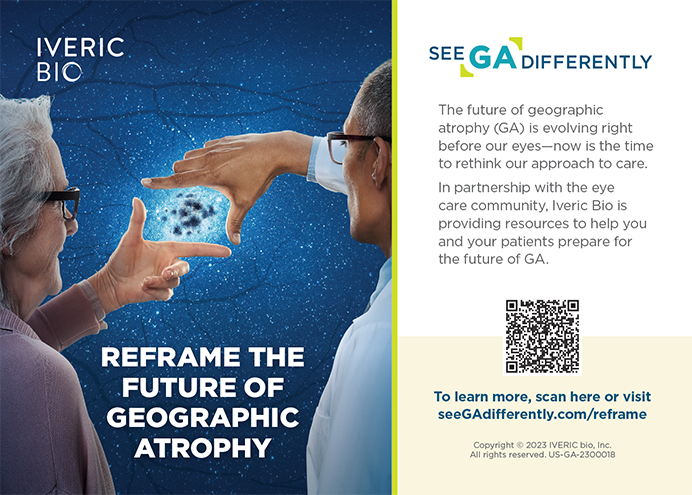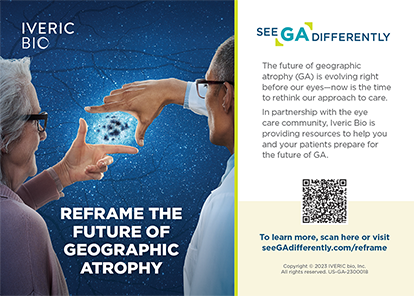Cataract Surgery | Oct 2005
Reflective Particles in the Cataract Incision
ROBERT H. OSHER, MD
I have invited some of the foremost experts in the field of cataract surgery to comment upon an issue that does not receive a great deal of attention. I cannot help but be aware of tiny reflective particles in some cataract incisions (Figure 1). Although these findings are subclinical and do not seem to cause any problems, I recall the epidemic of titanium shed by phaco needles several decades ago. I leveraged as much pressure as I could on the industry. Alcon Laboratories, Inc. (Fort Worth, TX), was the first to accept the challenge to improve the polishing technique for their instruments, and the titanium particles from this manufacturer's products have since disappeared. Because a soft IOL's optic behaves like a magnet, any tiny metallic particles will adhere to the lens' surface and act as a beacon of light when the slit beam passes across the eye during a postoperative visit. Yes, the phenomenon is insignificant, but it is not really acceptable.
The sources of the tiny reflective particles are many. Despite bending the 22-gauge needle for the capsulorhexis and then carefully wiping the instrument before entry, I have seen particles remain in the incision. I have also seen particles from metallic blades and, surprisingly, from diamonds. The last observation leads me to believe that the autoclaving of instruments can leave mineral deposits. Although I am confident that these particles are not from the phaco needle, I am equally sure that a metallic wrench for tightening the tip should be avoided. Occasionally, a straight or curved cannula or even a microhook that passes through the incision will leave behind the particle. Rarely, I have seen swirling precipitates that enter the eye along with the infusion that are probably the result of wear and tear from the internal cannula's lumen.
When I shared my observations years ago at one of my courses, my esteemed colleague Samuel Masket, MD, commented, “Bobby must be bored!” Although we are not dealing with infection or inflammation, it is my opinion that we should leave only one foreign body, the IOL, inside the eye at the end of cataract surgery. In our pursuit of the perfect operation, I plan to continue to challenge manufacturers to improve their instruments' finishes and their polishing of internal lumens. Here is what some expert cataract surgeons have to say about this matter.
SAMUEL MASKET, MD
The very fine glistening that may be noted in the incisional tracks following cataract surgery represent an enigma, but I believe they are of little concern at this time. It is curious to note that they are observed in virtually all corneal incisions, irrespective of the use of steel or diamond blades. That suggests that the particulate matter represents a residue from the phaco process, the viscoelastic agents, or the BSS infusate. The most interesting question remains whether the particles are strictly related to phacoemulsification. In that case, they would not be noticeable following other anterior segment surgery such as corneal transplantation, glaucoma surgery, and phakic IOL implantation. Regardless of their cause, these particles do not represent a matter of concern in my view.
STEPHEN B. LICHTENSTEIN, MD
I have seen lots of things in my incisions, including sheared metallic fragments and “fibers.” My guess is that the reflective particles represent fine metallic stress fractures from the titanium tip.
ROGER F. STEINERT, MD
In my experience, this phenomenon is extremely rare, although certainly not unknown. I have always assumed that these particles came from the metallic instruments. They resemble the kind of particles we used to see in the LASIK interface in the early days of microkeratomes. Presumably, they are more common with certain types of instrumentation and qualities of finish as well as with certain calibers of stainless steel.
As we well know from LASIK, the corneal stroma has a Velcro-like quality to it, so any of the small particles will be difficult to dislodge once they become embedded in this tissue. The same is true of the iris stroma, as evidenced by the phenomenon of small metallic particles from phaco tips that was an issue a decade ago.
DOUGLAS D. KOCH, MD
Incisional particles are a total mystery to me. They are common and appear to be benign. What are they, however, and what is their source? Possible etiologies are metal or silicone from instruments, other debris from injected agents (eg, ophthalmic viscosurgical devices), and—perish the thought—tiny cortical particles from the current or previous surgeries. If the particles are in the incision, some must be in the eye. Are there any implications with regard to inflammation? Can they serve as carriers for bacteria? Until now, I did not really worry about them, but the more I think about it….
Section editors Robert J. Cionni, MD, and Michael Snyder, MD, are cataract specialists at the Cincinnati Eye Institute in Oh
io. They may be reached at (513) 984-5133; rcionni@cincinnatieye.com.
Section editor Robert H. Osher, MD, is a professor in the Department of Ophthalmology at the University of Cincinnati College of Medicine and is Medical Director Emeritus at the Cincinnati Eye Institute. He is a consultant to Alcon Laboratories, Inc. Dr. Osher may be reached at (513) 984-5133; rhosher@cincinnatieye.com.
Douglas D. Koch, MD, is Professor and the Allen, Mosbacher, and Law Chair in Ophthalmology at the Cullen Eye Institute, Baylor College of Medicine, Houston. He has served as a consultant to Alcon Laboratories, Inc., and Advanced Medical Optics, Inc. Dr. Koch may be reached at (713) 798-6443; dkoch@bcm.tmc.edu.
Stephen B. Lichtenstein, MD, is Attending Surgeon at the Cataract and Primary Eye Clinic of the Wills Eye Hospital in Philadelphia. He states that he holds no financial interest in the products or companies mentioned herein.
Dr. Lichtenstein may be reached at (610) 949-9785; slicht1224@aol.com.
Samuel Masket, MD, is in private practice in Los Angeles and is Clinical Professor of Ophthalmology at UCLA. He states that he holds no financial interest in the products or companies mentioned herein. Dr. Masket may be reached at (310) 229-1220; avcmasket@aol.com.
Roger F. Steinert, MD, is Professor and Vice Chair at the University of California, Irvine. He states that he holds no financial interest in the products or companies mentioned herein.
Dr. Steinert may be reached at (949) 824-8089; steinert@uci.edu.


